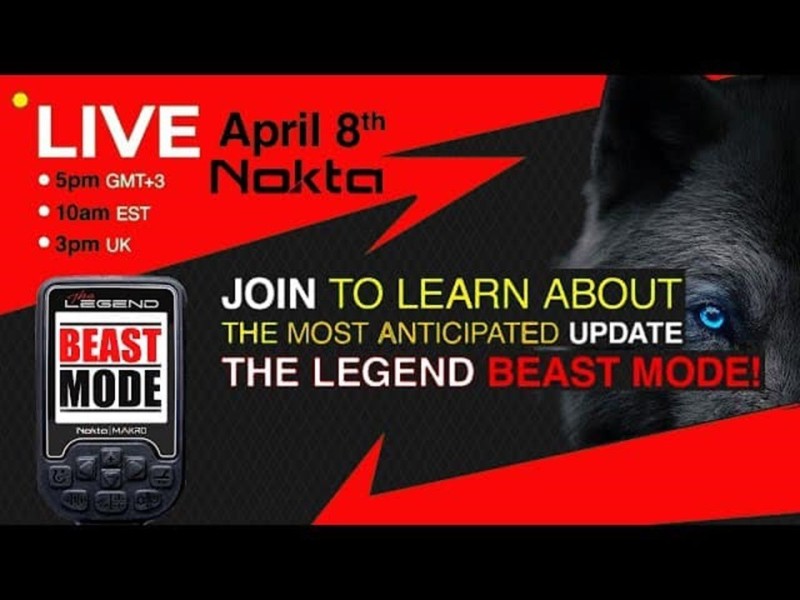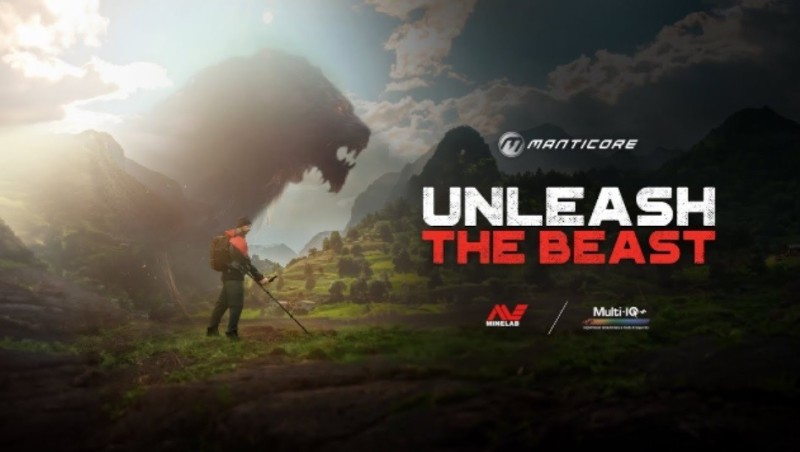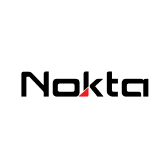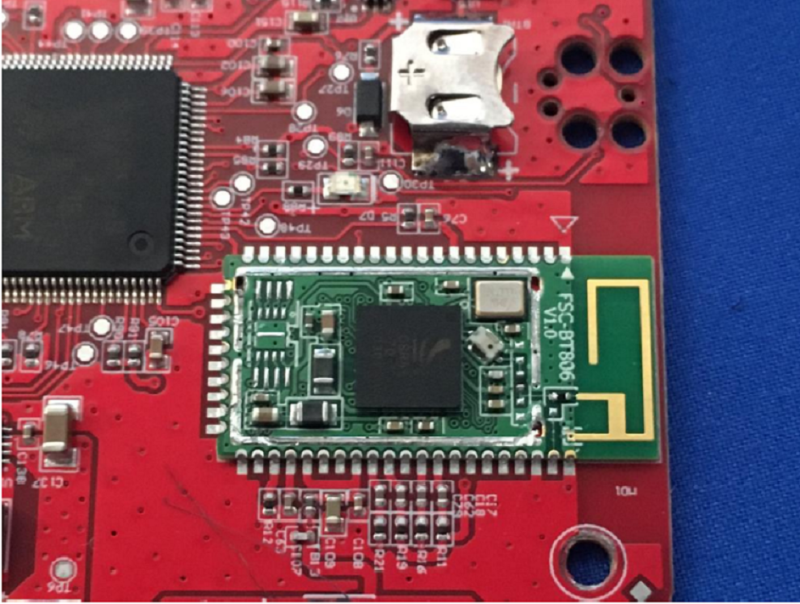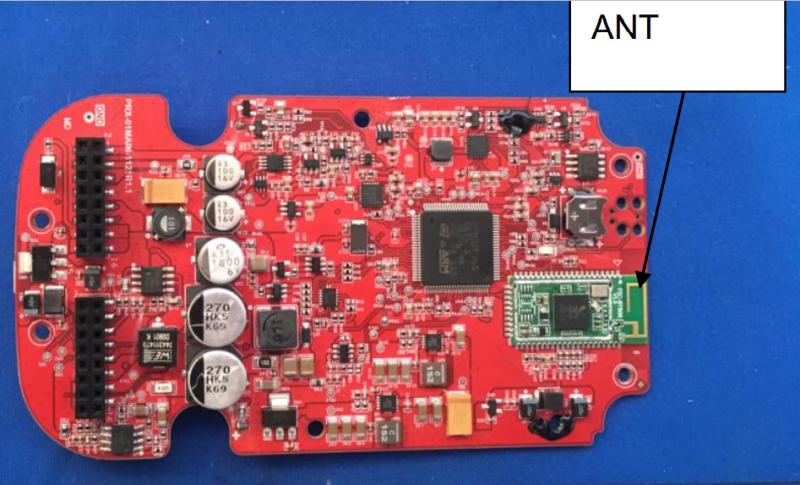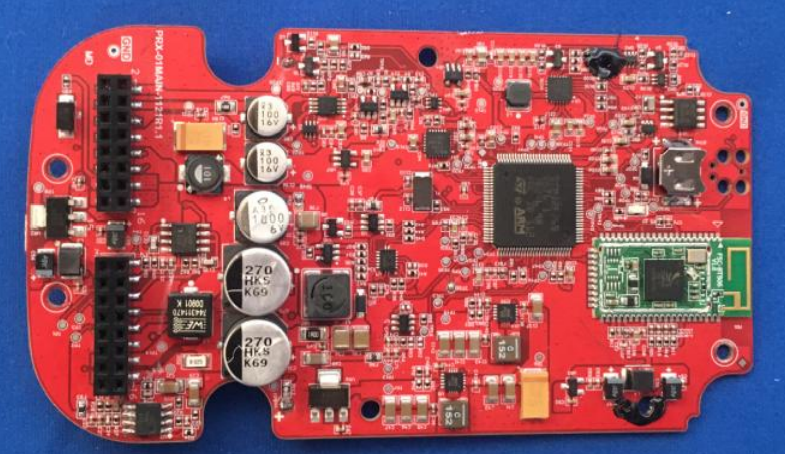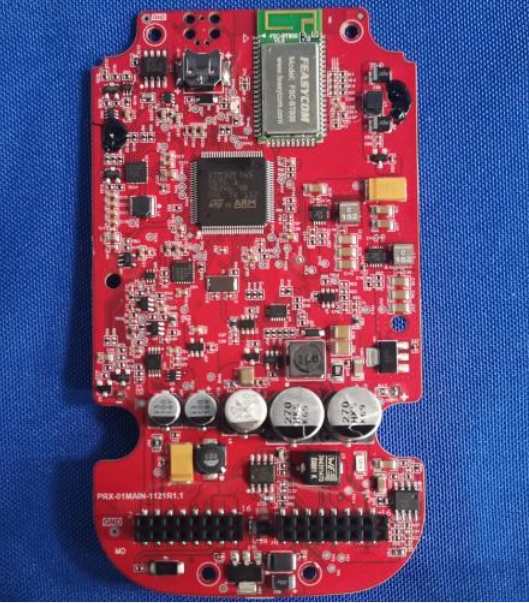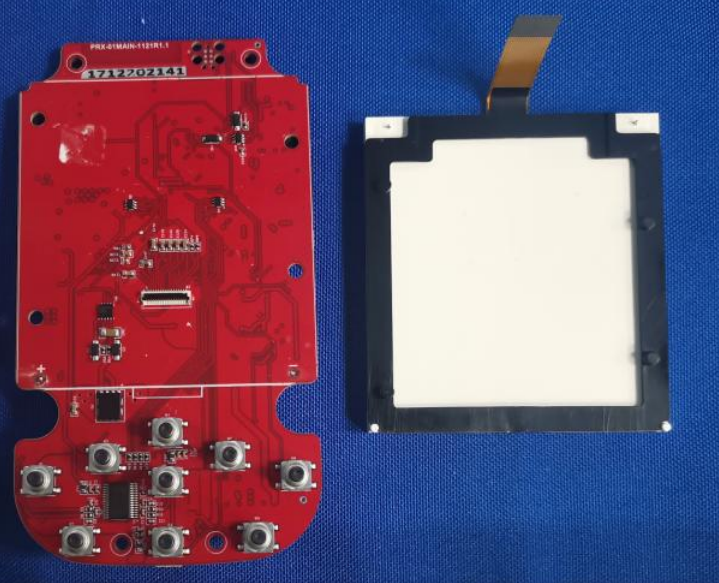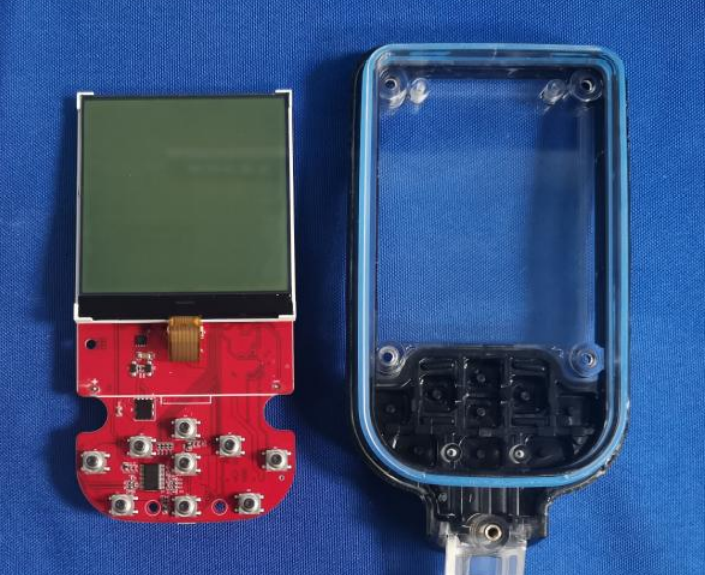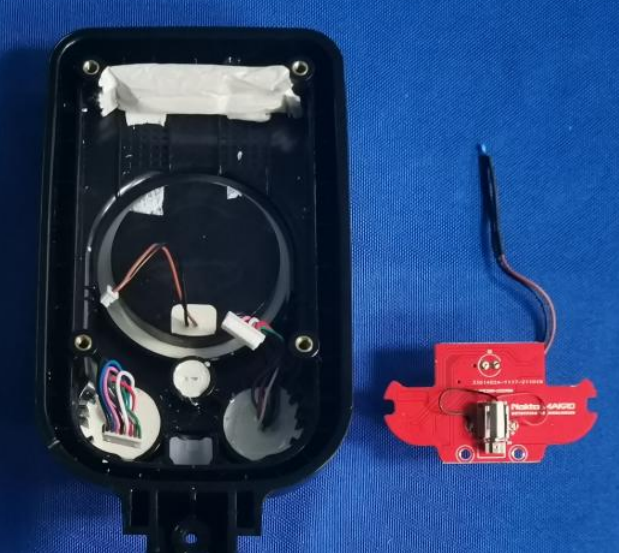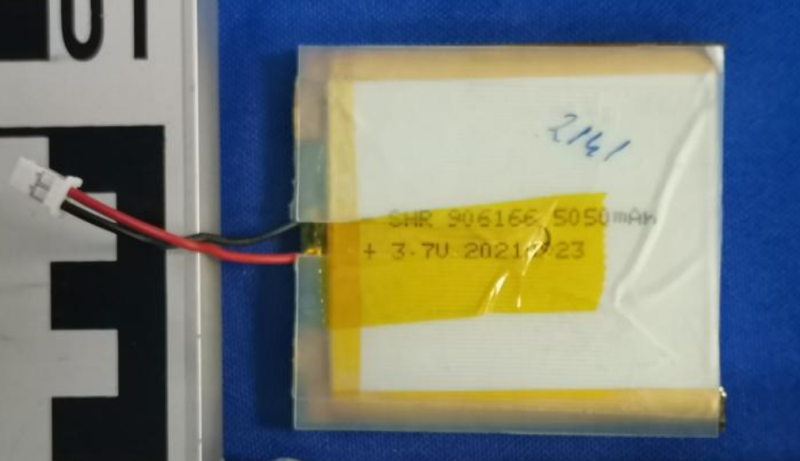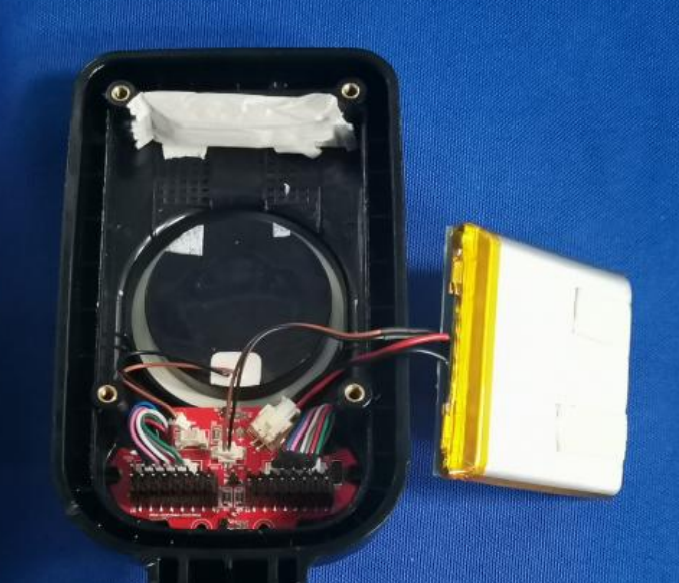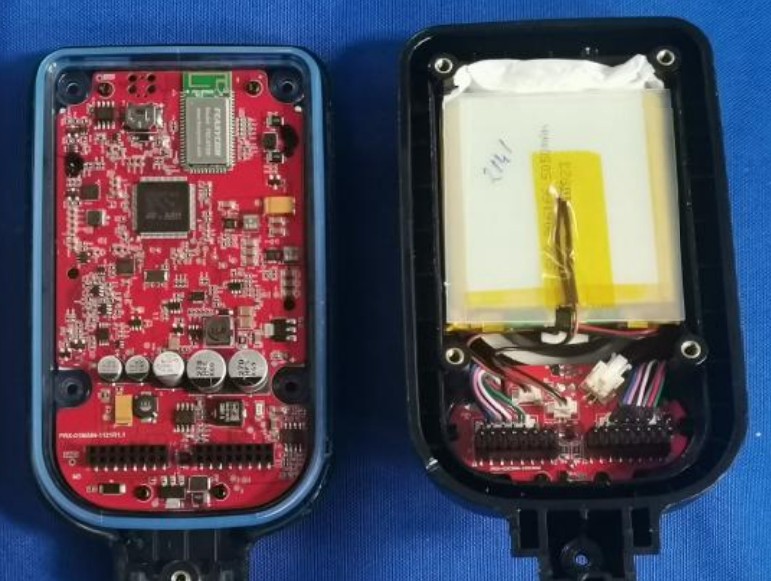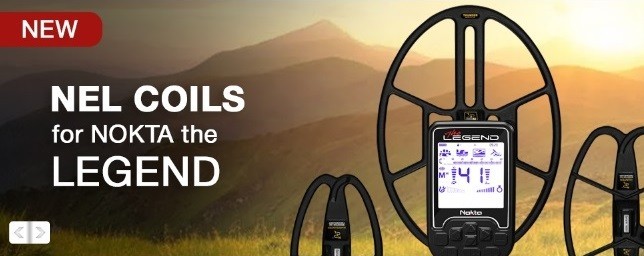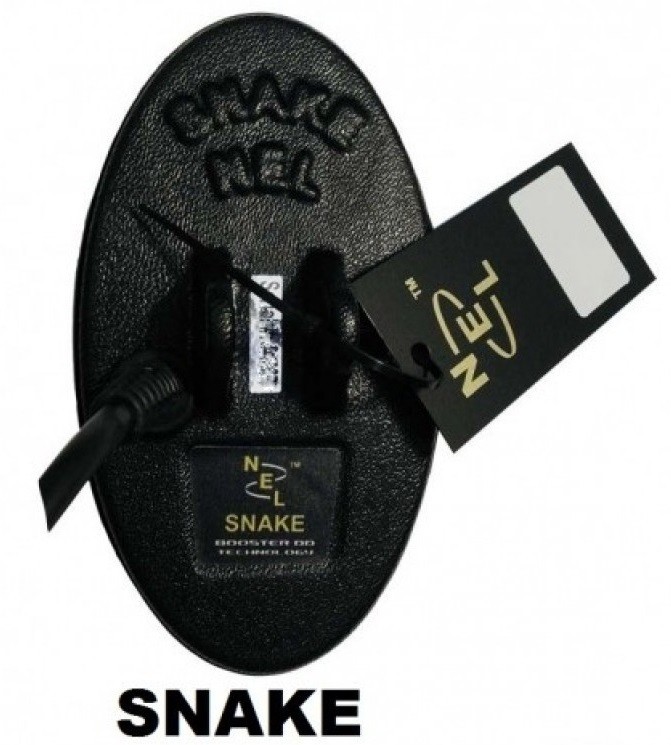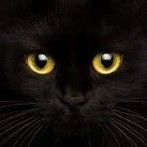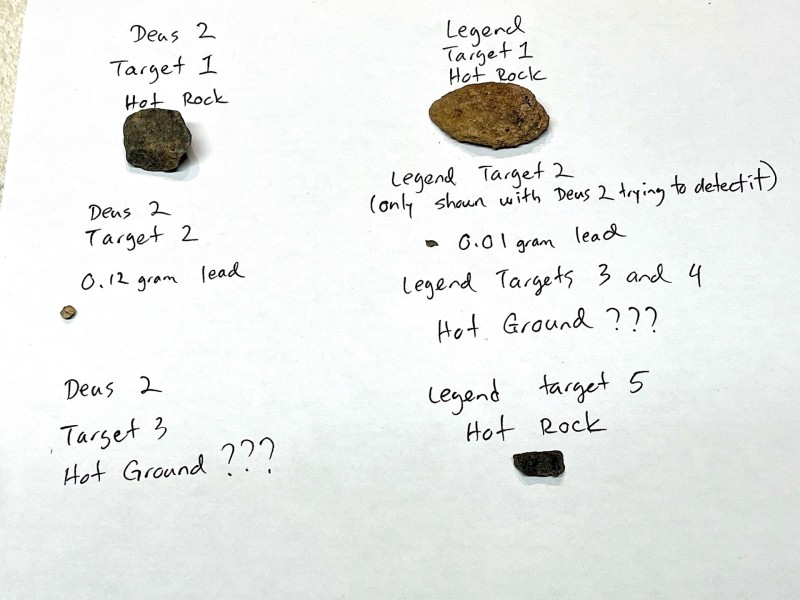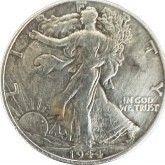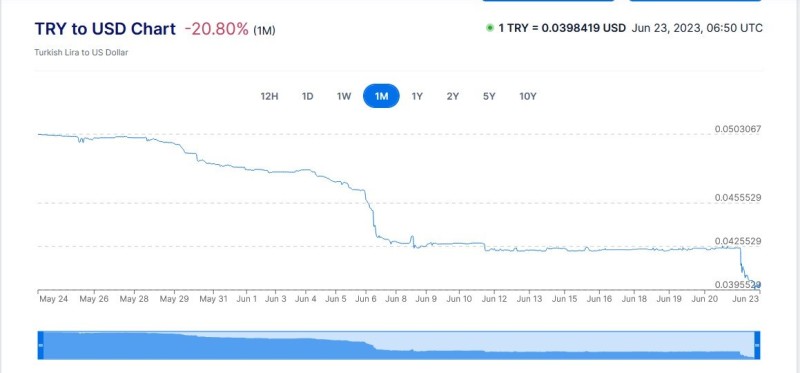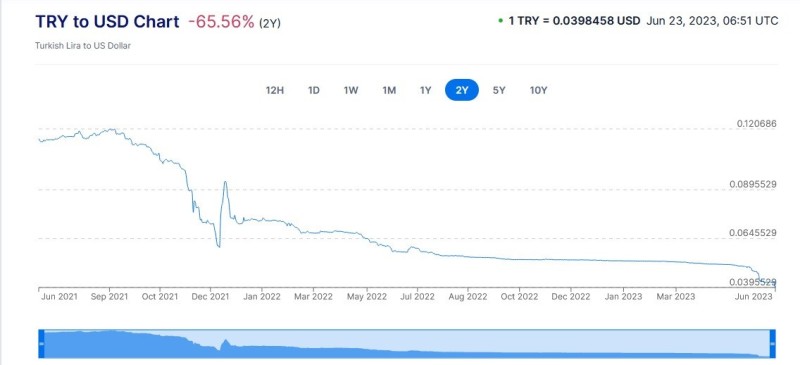Search the Community
Showing results for tags 'nokta legend'.
-
Just a quick survey here, Of all the Legend versions available now which one is in your opinion the best one so far? Please feel free to give your experiences with your favored version. Why? I'm trying to get a picture of which one I need to try if I have not yet. Only had 1.11, 1.13 and 1.14 in use. Went back to 1.11 but always open to trying previous versions and get a taste.
-
Exactly! If it was going to crap out it would have done it shortly after it was submerged. I’ve heard the nokta legends are better in water than the original equinox. Is this true?
-
Nokta Detection Technologies has released the Legend firmware v.1.14 Beta-1 Beast mode, here is the description from the Nokta website: V1.14 Beta-1 Test - Beast Mode Software Update (2024.04.08) Updates Made: 1. Deep Target Identification (dt) feature has been added. This feature allows non-ferrous deep targets, which are masked or detected as iron (ferrous), to be detected as non-ferrous. To access this feature, select the Recovery Speed setting and press the pinpoint button. When you navigate with the right and left keys, the letters "dt" will appear on the right side of the screen. You can change the value of the dt setting between 1-6 by using the plus (+) and minus (-) buttons. When it is at 0, this feature is off. When you increase the value, the stability of the device may diminish. This feature can be used in all modes with both multi-frequency and single frequencies. 2. Beast mode has been added. Very deep targets may have values close to the surrounding soil and therefore may not be detected. Beast mode allows you to detect targets at depths that cannot be detected in other modes. This mode resets the ground balanced soil, allowing deep coins and large masses to be detected by the detector. However, in this mode, targets at fringe depths may not give an ID or their ID may be unstable. To use this feature, simply press the frequency key in Gold Field mode. Beast mode is indicated on the screen by the letters "bE" under the multi frequency symbol M. (April 17, 2024 edit: use All Metal Discrimination A only in Beast Mode). 3. Second ground balance feature added in Beast mode. Due to its configuration, Beast mode may cause the device to give false signals to ground changes and mineralized/hot rocks. This may cause discomfort to the user during detection. Beast mode offers users a 2nd ground balance feature to overcome mineralized/hot rocks, red bricks and other ground changes in the surrounding environment that have different properties than the soil that’s been ground balanced. With the second ground balance, depending on the properties of the hot rock or brick, in some cases, complete silence can be achieved over these falsing targets. In other cases, a broken signal may be heard. Broken sounds indicate that the detected target is a mineralized/hot rock. To use this feature, press the Ground Balance button to access the setting. Then, activate the 2nd ground balance feature by pressing the Frequency button. When the 2nd ground balance is activated, the number "2" appears on the screen above the letters Gb. You can perform the 2nd ground balance by pressing the pinpoint button. When Beast mode is selected, 1st and 2nd ground balancing can only be performed automatically. Manual ground balancing is not possible. You can switch from the 2nd ground balance to the first one by pressing the Frequency button again. ( April 17, 2024 Edit: in Beast Mode must Ground Balance). 4. Ability to reset the 1st and 2nd ground balance settings in the Beast mode. While Beast mode is selected, the ground balance value is reset by entering the ground balance menu and long pressing the up button. When the button is held down, the animation is shown on the screen. To reset the 2nd ground balance value, first activate the 2nd ground balance. Reset the 2nd ground balance value by pressing the up button again. 5. "Iron Rejection" feature in Beast mode. Beast mode, like the Gold Field mode, produces signals for both non-ferrous and ferrous targets by changing the frequency of the sound according to the strength of the received signal. In order to distinguish ferrous targets, especially those closer to the surface, depending on the signal strength received from the ferrous target, the device emits a lower tone than that of the non-ferrous targets with the frequency varying according to the strength of the signal. To access this feature, select the Recovery Speed setting and press the pinpoint button. The letters "Ir" will appear on the right side of the screen. You can change the value of the "Ir" setting between 1-5 by using the plus (+) and minus (-) keys. When it is at 0, this feature is off. When the value is increased, the probability of emitting a ferrous tone for deep non-ferrous targets increases.
-
They say imitation is the sincerest form of flattery, and well, the Legend was a bit of a copy of the Equinox, and now its marketing is becoming a bit more Manticore like. Colour schemes, imagery, naming.... all very familiar. I'm not so sure I like this marketing strategy, they're doing innovate original updates with the Legend, why not take their own path and separate themselves from the competitors.
-
The Legend Beast Mode Demonstration FB: https://www.facebook.com/noktadetectors/posts/pfbid02FoBkfoE1LcNycut7ttJGorTMvVEjJ26PWrAfQ9DrPy5dH7ogUdwL2EkCD6NaRGjCl?__cft__[0]=AZWFP5TjsgWR-2-p2CgU58PvXg3OYaMVrETfyTYFVpoPZUT4Uu0kg51-Xa1_SXZtLnVt-LNAR370Zo-3EBFyNSmc4Lm50MPEAgz8FVybnnLo0PiVRuszjPkI84KJvNJYOpAyJbtWnhXPVzuDHWtRqFjkyPSxgFh-ZJI8UtAjrbXHYZSN4GWUMUX14Ld_FIYIrUUYDLpvxhe0pN-P5AZyzAJ_&__tn__=%2CO%2CP-R YouTube:
-
Legend Internals, Circuit Board, Processor, Etc.
phrunt posted a topic in Nokta / Makro Legend Forum
-
I have not been able to determine the usefulness of the EQX 900 iron bias setting. It appears to only suppress the overall target signal. In the attached video the Nokta Legend has an iron filter, bottle cap reject plus an iron stability setting. It appears the Legend “iron stability” setting isolates and actually addresses false positive signals. What do you think?
-
It's great to see Nel still around, they've survived the odds so far and now they've released their range of coils for the Legend. Legend owners now have an additional 10 coil choices for the detector, and this will mean it's fiercely competitive with the best of the best from any brand. That 17x15" Nel Big would have to add some depth, then the absolute tiny gold nugget (flake) sensitivity of the Nel Snake at 6.5 x 3.5. The Nel Superfly and Tornado are also coils to take note of. It was always my condition that I wouldn't buy a Legend unless it had Nel coils, as I have too many detectors and adding another similar one would be a pointless exercise for my needs. However, now with Nel having their range of Legend coils available it is a must have detector for me, the Legend paired with a Nel Snake coil would be a beast for prospecting. He's a link to the Legend's Snake coil. https://nel-coils.com/index.php/en/production/nel-snake-9-5x3-5?id=2376 I'm sure they're going to be hard to come by at the start, and no doubt expensive as shipping from Ukraine at the moment is sky high, a price I am willing to pay though, this has to be a giant kick in the marbles to Noktas competitors.
-
The Legend was my first SMF detector, and it has really impressed me with it's performance, especially on my mineralized relic sites. These are red dirt sites that I had worked over hard with Single frequency machines, to the point of seeming worked out. The Legend made them seem like new again. Now, 2 years later, the same sites seemed to be getting thin again. A second, different SMF detector, the Rutus Versa has shown that there were still good targets to be found. These have mostly all been small to very small, but a few larger surprises. It is amazing to me how different machines "see" targets/ground & report in their own way. This tells me there is no ONE BEST detector, and a site is never completely worked out. This is a good thing to me, because I like fooling around with detectors and learning what works & why. I have been experimenting on & off with ways to make the Legend perform better on smaller coin size targets in my red dirt minerals. One that shows promise is taking advantage of the Legend's adjustability to set up a special 4 tone audio profile. This profile is to capitalize on the fact that the Legend actually sees a smaller/deeper target in my mineralized soil, it just sees it, and calls it as a Ground response of TID 1. The special audio profile puts TID 1 in the first tone bin by itself, with a medium high pitched tone. The second tone bin is for iron, with the normal low tone & breaks at 7. The third tone bin is a normal mid tone, and the fourth the normal high tone. This works quite well, at least on my test bed. I have had some success with it in the field but need to do more hunting with it. What I really think @Nokta Detectorsshould consider is adding a Hot Rock control to the Legend. The Rutus Versa has this feature, and it makes a big difference in bringing out non ferrous targets that are being swallowed up by the Ground mineral response. By adding a positive adjustment, the TID scale is shifted slightly to bring targets back around to a non ground/non Iron TID/Tone. I demonstrated this in the first video I posted several weeks ago on my channel Red Dirt Detecting. Here is a video of the Legend, running thru the same test as the Versa previously. Please forgive the crudeness of my second only video attempt. I will try to improve in future.
-

Legend USA Coin Target ID Scale Thoughts
Jeff McClendon posted a topic in Nokta / Makro Legend Forum
After 5 weeks using the Legend for mostly US modern coins and a bit of relic hunting, I have been pleasantly surprised with the extra 10 target IDs that the Legend has which separates it from its main competition (Equinox). What pleasantly surprised me most was that Nokta Makro had the good sense at least for me, to put those extra 10 target IDs in the low to mid non-ferrous conductor range. These observations are coming from in the field use of the Legend in moderate to highly iron mineralized dirt on surface to 8" or so deep targets, not from air testing. So, on the Legend target ID 11 to target ID 24 encompasses tiny foil up to the older square tabs. US Nickels are usually a very percussive and obvious 25/26, with normal modern oval pull tabs usually coming in at 26 to 30 with more elongated audio responses than US nickels or gold rings. Beaver tails start at 30 or so and can go up to 37 along with larger pull tabs and can slaw. Zinc pennies if they are in decent shape will usually hit hard at 40 to 42. If they are heavily corroded the spread gets much bigger and can be from 36 to almost 50 until the coil is centered over them. US clad dimes have been consistently 44 to 46 for me, copper pennies have been 46 to 48 and US quarters have been 49 to 52. So that is a full 30 segments of low to mid conductor targets IDs which so far have been very predictable and dependable compared to the 20 target Id segments for the same targets on the Equinox. I have found small womens gold earrings and rings (2 grams and under) in the 12 to 20 range. Some very rusty steel crown bottle caps make a great sound at 19/20 and fool the Ferro Check meter somewhat depending on ground mineralization. At least the 19/20 spot on the target ID range is not shared by a US coin. Another outstanding detector shares the US quarter target ID slot with crown bottle caps of all kinds and condition which is really annoying. So basically the Legend has 10 target IDs for iron, 30 target IDs for low to mid conductor non-ferrous (up to US zinc pennies) and 20 target IDs for US clad coins and high conductors. Speaking of steel crown bottle caps, contrary to a recently produced Youtube video which discussed crown bottle cap recognition and masking, aside from the already mentioned 19/20 rusty crown bottle caps that I have encountered, most crown bottle caps in really good shape will be obvious iron targets in the Ferro Check meter with the meter swinging wildly between mostly all ferrous to mostly all non-ferrous during coil sweeps. They will give a really distinctive mixed tonal and ID response that includes tones and IDs in the low 50s that alternate with iron tones (if you accept part of the iron range) if they aren't covered with foil like the Modelo crown bottle caps. Those will give iron range, aluminum range 30s and low 50s target responses that really sound wild. Those crown bottle cap responses can also sound a bit similar to coin spills so a moment of investigation is a good idea if the target responses are fairly shallow. I am still totally enjoying the Legend. I have not strayed too much from Park M1 using a 6 tone audio setup that lets me know immediately what the conductivity of each target is along with a good idea of size, depth and shape if the targets are roughly coin sized. Aside from still not being able to update to 1.07 due to who knows what..... I still really like the Legend. -
Hello. In the following, I'm referring to iron falsing as, "When a detector produces a good nonferrous tone and a good nonferrous ID on a ferrous object". I mention that, because whenever I've talked about iron falsing on other venues, a few people always reply with, "I can identify iron by the iron grunt", to which I reply, "Well then, that's not iron falsing!" 😁 Anyway, I use a Legend and often hunt in iron infested sites. I use a high weighted SMF mode, but most importantly, I lower my iron bias to the point that iron falsing begins to occur. That way, I know I'm getting the best iron unmasking ability that my detector can provide. The Legend's Ferrocheck identifies and shows the ferrous and nonferrous content of what's under the coil, and it does so regardless of where settings such as tone breaks or discrimination is set. What I've noticed however, is that Ferrocheck often identifies iron falsing better than ID and tones. For example, when I instigate iron falsing, I'll often get a good nonferrous tone and ID on a nail, but Ferrocheck is clearly, and correctly, identifying the nail as ferrous. To me, it's an invaluable feature when hunting in iron. Now, I'm fairly certain that the Manticore's 2D screen, and the D2's X/Y screen has that same ability to identify iron falsing, but how the heck are those features able to do that, when ID and tone cannot?
-
What is the differences between the “range of simultaneous multi frequencies” utilized in both the Equinox 800 detecting modes and the Nokta Makro Legend modes? Here is my attempt to explain my concern: Per the ML Equinox 800 user manual the Equinox provides four (4) detecting modes: Park, Field, Beach, Gold; plus eight (8) profiles divided in two (2) pairs per mode: such as Park 1, Park 2, Field 1, Field 2, etc; and one (1) custom user profile side button. Park 1, Field 1, Beach 1 & Beach 2 are “weighted” on the “lower simultaneous multi frequency range”. Park 2, Field 2, Gold 1 & Gold 2 are “weighted” on “ higher simultaneous multi frequency range. The NM Legend has four (4) detecting modes: Park, Field, Beach (dry & wet) & Goldfield; zero (0) profiles such as Park 1, Park 2, etc; and four (4) user custom modes. All the detecting modes, per NM all modes are optimized for depth. Currently NM has not addressed nor is there a specification “weighing” the range of simultaneous multi frequencies (low, mid, high) utilized in any of the NM Legend’s detecting modes. The YouTube video “Pasture 1” find of a thin coin indicates the “Field mode” may be utilizing a higher SMF range. When the Legend’s user manual is available online perhaps Nokta Makro will explain how simultaneous multi frequencies are utilized or weighed specific to each of the NM Legend four (4) detecting modes. Do the math 4x2 =8; 4x1=4; 4-8= -4. Certainly an answer I will be looking for prior to placing a pre-order or purchase.
- 9 replies
-
- detector tech
- nokta legend
-
(and 1 more)
Tagged with:
-
This is a short, rambling, 8 minute video that kind of shows what Deus 2 and the Nokta Legend sound and act like in a central Arizona gold field. No gold is found. Some hot rocks, hot ground and lead fragments are found. I am very fond of these two detectors so don't expect any mud slinging or drama other than me completely forgetting to video the Legend detecting plain as day, a 0.01 speck of a lead bullet fragment and me falling into a creosote bush which I did not react to very well......and of course deleted from the video. Creosote and I don't get along. My skin reacts to those bushes like they are stinging nettles on steroids. Legend is using the LG24 coil in GoldField M, A discrimination pattern, sensitivity 20, recovery speed 5, iron filter zero, audio gain 3. Deus 2 is using the 9" FMF coil, Goldfield FMF, Disc IAR 0, sensitivity 95, reactivity 2.5, audio gain 3. Both detectors are properly ground balanced, have been noise cancelled and have their threshold tones clearly audible. I only had about 2 hours to find the targets, make the videos and recover the targets and I am holding an iPhone in one hand while swinging a detector with the other on an up to 30 degree inclined ravine slope so don't expect anything earth shattering. Chase Goldman, the video of Deus 2 is for you. You requested I take Deus 2 on this trip. Otherwise I could have easily skipped the whole thing. Both detectors did very well. I did not. Here is a photo of the targets recovered. Deus 2 detecting its 0.12 gram lead target was the target showing a target ID of 32 towards the end of the Deus 2 part of the video. The Legend finding the 0.01 gram lead bullet fragment was not captured on video for my own insane reason being that I totally forgot about that target. I did try to detect it with Deus 2. It was the third target that Deus 2 tried to detect and had very weak, choppy responses and a target ID in the low 20s. Legend hit that target really hard.
-
After five months of testing with Tarsacci on the same site, I can say that this detector performs better in an environment full of iron and ceramics compared to DEUS II and The Legend Nokta Makro. Requires more time to learn and the audio is slightly less describing the objects in the ground. On the one hand, it is not distracting, on the other hand, it causes questions. Iron does not mask as much as in SMF devices. Similarly, the temperature above 30 degrees C The Legend and Deus II lose performance and stability after 15 - 20 minutes, the Tarsacci is doing much better. Maybe it's a performance issue or maybe it's a hybrid technology. I do not know. Target signaling comfort is better in The Legend and D2. In Tarsacci, the object must in DISC mode produce a fast repetitive ding-dong signal. A small copper coin 10mm in diameter by 25cm from a very irony spot is not a problem. Sand soil. Ergonomy is slight better with D2 and The Legend.
- 2 replies
-
- 5
-

-
- tarsacci
- nokta legend
-
(and 1 more)
Tagged with:
-
All, Was detecting this afternoon without the headphones and about an hour into, the sound (external speaker) stopped completely. It was fully charged, version 1.08 and it has been working fine up until this afternoon. The mute function is not activated, checked that twice. Turned it on and off several times, still no change. It is showing VDI’s, and everything else seems to be working fine, just no sound. Any ideas or anyone encounter this? Thanks.
-
Hey all, New to the forum, and the hobby, and need some advice. I've "discovered" an old farmstead near my house here in East TX that was on some of our oldest maps (since 1916!), and was occupied through the 1960's before it was bulldozed in the '70's and the land purchased by one of our school districts. The area of the house and barn are now an open field behind a school. I have secured permission to detect there, and as far as I can tell it has not been touched since it was leveled. It certainly hasn't been detected, as I've already found one coin spill that was mostly older clad ('60s-'70s), but did find one 1945 P War nickel that makes me hopeful there's older stuff there. Anyway, I've been preferring (for my sanity) to work the open areas away from the old house foundation due to the overwhelming amount of trash. There is literally both ferrous and non-ferrous trash carpeting the area. My Nokta Legend (I'm running the stock 11", but just ordered the 6" coil) has actually been doing an amazing job of discriminating (I use a custom 6-tone program based on my reading and youtubing), and I've been able to find clad pennies and nickels deep amongst aluminum slaw and rusted iron galore. But, if I get too close to the old house there are just too many signals to deal with and it's overwhelming. I could literally spend hours in a 100 sq ft area investigating every potentially good signal (soooo many old Budweiser cans and TV trays, lol) and scraping slaw out of the top 1" of the ground. So, my question to y'all is, how do you approach a site like this? Would you "clean it up"? Or do you think that is not worth the time and effort, and I should just stick to the areas I can sanely cover the most ground in the few hours I have available on the weekends? Are there any areas around an old house you would focus on if you had time? What would your approach be? I realize this is a good problem to have, and I am looking forward to hearing your advice!
-
Jeff, given your very fine review of the Nox vs Legend for general detecting, I was wondering if you have any updated thoughts on Nox vs Legend specifically for gold prospecting? Equinox Gold Mode versus Legend Gold Mode - which do you prefer and why? Put another way, given that a Nox 800 costs 50% more than the Legend, is there any reason for a new buyer to consider the Nox over the Legend for gold nuggets? Thanks in advance for any answer.
-
I, like many others have a huge amount of appreciation and trust in the detecting abilities of the Equinox 600/800. My only issues with the original Noxes are its shaft system, well documented water ingress and its too compressed target ID range especially around target IDs 10 to 20. Other than that, the Equinox 600/800 really revived my VLF detecting life. I personally know other detectorists that have had the same experience. I will own at least one of those detectors for as long as they last. Nokta released the Legend back in early 2022. Lots of opinions have been expressed by people that either haven't used one or have used one very sparingly. There have been opinions about the roll-out, marketing hype, Nox cloning, the number of software upgrades (why wasn't it a finished product at release???) and the well known speaker and software update issues many people had including me. The fact is from my dig hole and my soil conditions: The Nokta Legend has at least equaled and in some aspects excelled beyond the Equinox 600/800 from my experience. That is saying a lot if you have reaped the benefits of all that the Equinox 600/800 have to offer. I am not going to talk about the Equinox 700/900 since I don't own one anymore and have moved on. As a USA coin hunter, I can't tell you how many US nickels I have recovered (stopped counting at 100 several months ago) and six gold rings that had the same target IDs as US nickels, from parks that I had pounded with the Equinox 600 and 800. The Noxes didn't miss those targets. They just reported them as having target IDs and sounding too much like a modern oval pull tab which I was tired of digging. With the Legend's expanded mid range target IDs, US nickels (and any gold rings with the same IDs) do not share target ID space with nearly as much regularly occurring aluminum trash. The Legend also does just fine on deep clad, deep silver coins and jewelry, iron trashed sites, and in the same hot ground that I often hunt on that the Nox 600/800 handle well. It has also done very well at the fresh and saltwater beaches where I have used it. If you are in the market for a waterproof SMF detector that detects at least as well with very similar audio characteristics and target ID stabilty as the Equinox 800 but doesn't leak and has a slightly more expanded target ID system in all the right places, has a good shaft system, good coil selection, good wireless capabilities that are compatible with the Equinox 800 Bluetooth gear, and also does just fine in the gold fields, from my experience after almost 1000 hours of use, the Legend is a viable and very inexpensive alternative for an out of warranty Equinox 800 that you don't want to completely wear out or dunk anymore. Just my experiences.
- 50 replies
-
- 29
-

-

-
- nokta legend
- minelab equinox
-
(and 1 more)
Tagged with:
-
I'm having a hard time transitioning to old man status. I am an experienced detectorist but I can't seem to decide on the Legend or Xterra pro. I can afford either but don't want both. Maybe my brain is slipping or something. I can run the Legend in single frequency if needed. I don't go near beach or salt water. The Manticore is nice but I don't need all that bling. Just need a light machine. Hate to ask this seemingly stupid noob question but I would like some simple input. Don't need any complicated answers. Thanks John DeMarco
-
This video "Nokta makro legend is this the deepest standard mode ?" www.youtube.com/watch?v=vr6XtgbqhIc appears to show the depth potential using the Goldfield mode setting. Also wonder how well Goldfield mode would be in mineralized wet sand at the beach for jewelry and alike?
-
I would like to say that the ferro check is a great feature on the legend. I have found it to be very accurate in recognizing a nonferrous target mixed in with iron. I’ve been running the legend on a recovery speed of only three and it’s ability to locate good targets mixed in with iron is quite impressive.
-
I've been keeping an eye on the Lira for a while now, the Turkish currency and it's just been on a massive fall against most currencies, in fact it's fallen 65% in the past 2 years against the USD, 20% in the past month alone. The Turkish economy is obviously a basket case causing this with insane inflation with the annual inflation rate at 40%, makes us feel kinda silly complaining about our mid single figure inflation rates. And if you thought your interest rates were bad in Turkey they've just doubled from 8.5% to 15% in the past couple of days and they're needing to go up a lot more yet with forecasts of 25% by the end of the year. This it the past 2 years of the Lira, look at it tracking right down vs the USD. And the last month alone, look at the dive at the end. The annual inflation rate reached 85 per cent late last year and the central bank burned through most of its reserves trying to prop up the Lira, down 90 per cent against the USD over the past 10 years. So what does this mean for Nokta's pricing? All those US buyers paying their 500 or 600 USD or whatever the Legend currently costs is a whole lot of Liras, much more than it was even a month ago, so does this mean Nokta can further reduce prices blowing the competition out of the water? Possibly. We can only wait and see.
-
This is a semi in the ground test on a 0.1 gram gold nugget for anyone that would like to use one of the "do it all" simultaneous multi frequency VLFs for gold prospecting. For the "fairness" police, please don't complain about coil sizes. The smallest coil available for Deus 2 is the 9" coil. So blame XP not me. XP include a simultaneous multi frequency "Gold Prospecting" mode on Deus 2. I would like to use it. This video shows why currently I will not use it. Video starts with checking the test area ground for targets, ground balancing, showing the target and how it is placed in the ground and then the test begins. Deus 2 uses customized FMF Goldfield and customized single frequency Mono program both with sensitivity on 95. I wanted to use the Hi Square audio, Pitch tones and the absolute zero discrimination for both programs along with a slight threshold. That is why I did not use stock default programs. All settings are as identical as I can make them except for the new Audio Filter feature which is on setting 1 for FMF Goldfield custom program 16 and it is on 0 for 40 kHz Mono custom program 15 which was an oversight failure on my part. I did retry it after making the video with FMF Goldfield custom program having Audio filter on 0. It made zero difference. Legend starts at 3:25 of the video. It uses its 6" coil with sensitivity on 23 in Gold Multi and Gold 40 kHz. Equinox 900 starts at 6:00 of the video. It uses its 6" coil with sensitivity on 23 in Gold 1 Multi and Gold 1 40 kHz. All settings are clearly shown in the video for each program being used on each detector. The ruler sticking up out of the ground behind the target is 5 cm high and the target itself is 2" deep or roughly another 5 cm deep. Legend and Equinox in the Gold Multi modes can hit this target 5 cm above the ground. They can hit it at 4 cm above the ground using single frequency 40 kHz. Deus 2 using its 40 kHz Mono program also hit this target at 4 cm above the ground. We could debate about whether Deus 2 in FMF Goldfield is actually hitting the target even with the coil bumping into the target holder. Deus 2's mineralization meter is between half and 3/4th full so moderate to high mineralization which all three detectors struggle with when ground balancing in selectable single frequency 40 kHz. This video is being sent to XP. I sent XP an email and they replied within 24 hours which I really appreciate. Thank You XP!!!!! This is the email exchange between me and XP: HI Jeff Thanks for this feedback. Yes you have right the 40khz of the DEUS II would perform very well if available also in the gold Field Program, as the mono frequencies from the DEUS II are more powerfull than DEUS 1. We will think to make this availabe in the next version. Regards XP TEAM Message : XP, thank you very much for the Deus ll software update version 1.0 and for making it Mac compatible. I am a gold prospector. I use VLF and Pulse Induction detectors. I use a VLF detector for detecting the smallest bits of gold in the 0.5 gram and much smaller size range. I have used Deus 1 and ORX for this. They work very well in their Gold modes. I would like to use Deus 2 for gold prospecting. However, even after updating to version 1.0, Deus 2 FMF Goldfield sensitivity to very small gold nuggets 0.5 gram and smaller down to 0.01 grams is extremely poor. Deus 2 Mono or Fast 40 outperform Deus 2 FMF Goldfield on these types of targets by up to 5cm. One of my test nuggets is 0.08 grams. It can only be detected using FMF Goldfield at 3cm. Fast 40 and Deus 2 Mono will easily detect this same small nugget at 8cm. Being able to use FMF technology in highly mineralized gold prospecting areas would be really beneficial. Unfortunately, for whatever reason, FMF Goldfield's insensitivity on small to very small bits of easily detectable gold using Deus 2 Mono is still very disappointing.
- 2 replies
-
- 15
-

-

-
- nokta legend
- minelab equinox
-
(and 1 more)
Tagged with:
-
A friend of mine has been struggling with finding anything much with his detector. I offered to sell it for him on Ebay. Since I have had it for a few days and my messed up ankle can at least let me stand on it..... I decided to do a little US nickel/US quarter target ID accuracy test video featuring the XP Orx, Garrett Apex and Nokta Legend. It is only 3 minutes long or so. Nothing earth shattering or unexpected in this video from these three detectors that have very similar prices. A surface US nickel, a 4" deep US nickel and a 6" deep US nickel are detected for accuracy and signs of up and down averaging in high iron mineralized dirt. Same for a surface US clad quarter and a 6" deep US quarter. See if you can guess which detector is driving my friend crazy enough to just stop detecting for good.......
- 48 replies
-
- 7
-

-

-
- xp orx
- nokta legend
-
(and 1 more)
Tagged with:



